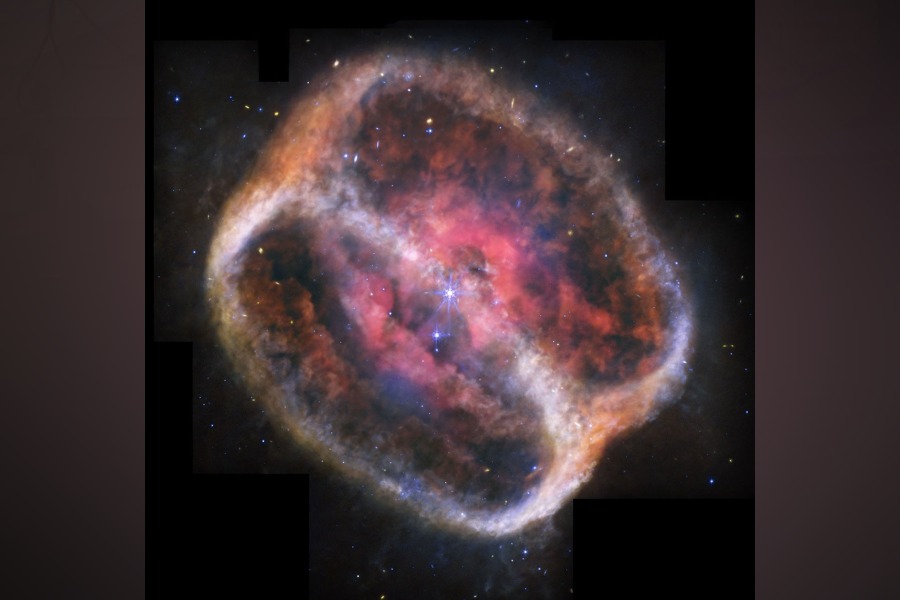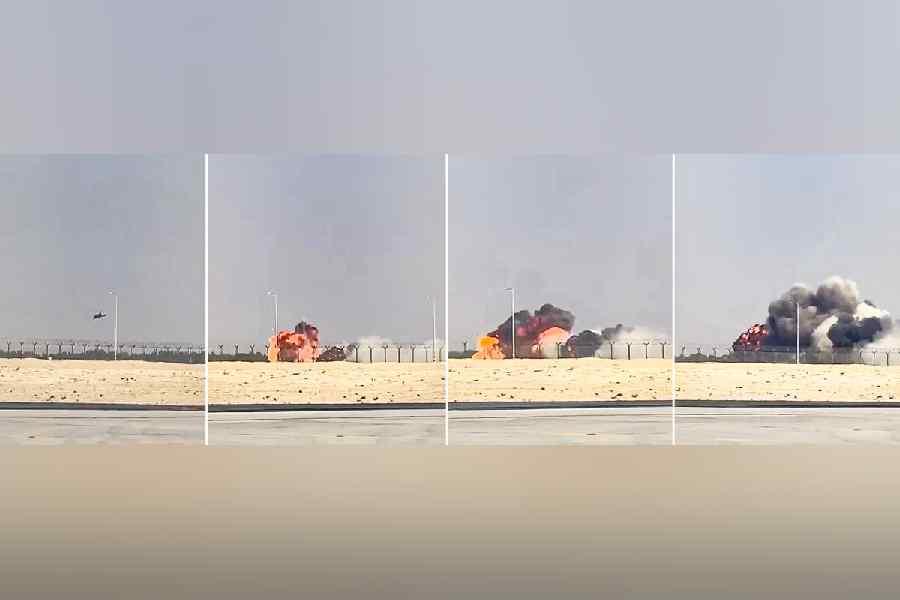Nasa has released new images of the planetary nebula NGC 1514, revealing a dying star shedding its layers of gas and dust.
Captured by the James Webb Space Telescope’s Mid-Infrared Instrument (MIRI), the visuals offer the most detailed view yet of the nebula, located about 1,500 light-years away in the Taurus constellation.
The images show two stars at the core of NGC 1514.
One of them, now a hot compact core, was once several times more massive than the Sun. It is in the final stages of its life cycle, having ejected its outer layers. This process formed the visible structure of the nebula.
Webb’s mid-infrared observations have brought subtle features into focus. The telescope captured faint dusty rings around the nebula and “holes” in the pink core region, where material has broken through. A network of clearer holes near the central stars suggests that faster-moving material pierced these sections.
The rings, first detected in 2010 by Nasa’s Wide-field Infrared Survey Explorer (WISE), now appear as fuzzy clusters entangled in irregular patterns. Their detailed structure had remained out of reach until now.
“Before Webb, we weren't able to detect most of this material, let alone observe it so clearly,” said Mike Ressler, project scientist for Webb's MIRI at NASA’s Jet Propulsion Laboratory in southern California.
The two central stars, seen by Webb as a single object due to their proximity, are marked by bright diffraction spikes. They orbit each other in a close, nine-year cycle and are surrounded by an orange arc of dust.
Nasa said the nebula resembles an hourglass with its ends truncated, tilted at a 60-degree angle—creating the appearance of material spilling from a can. The distorted forms may have emerged as the companion star came close during the main star’s peak material loss, shaping rings instead of a spherical envelope.











